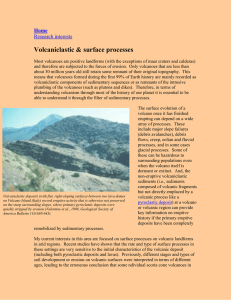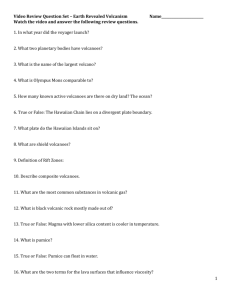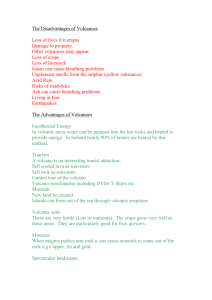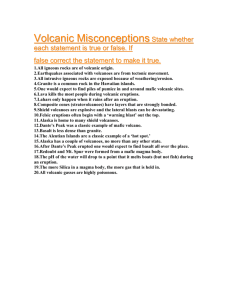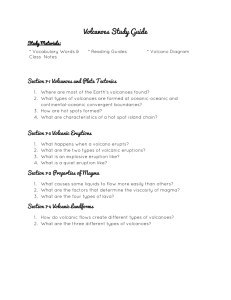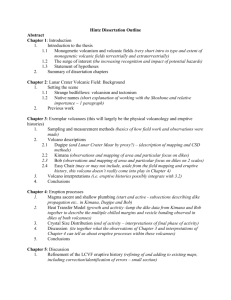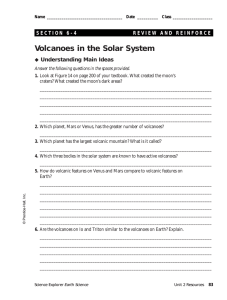basaltic_volcanism.doc
advertisement
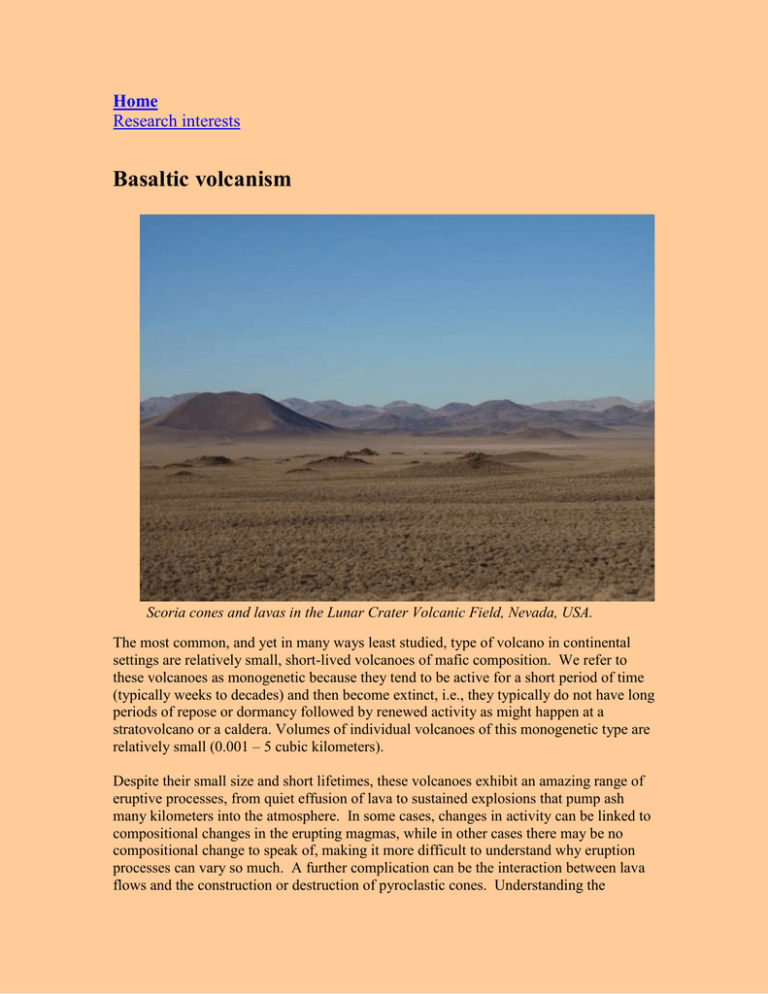
Home Research interests Basaltic volcanism Scoria cones and lavas in the Lunar Crater Volcanic Field, Nevada, USA. The most common, and yet in many ways least studied, type of volcano in continental settings are relatively small, short-lived volcanoes of mafic composition. We refer to these volcanoes as monogenetic because they tend to be active for a short period of time (typically weeks to decades) and then become extinct, i.e., they typically do not have long periods of repose or dormancy followed by renewed activity as might happen at a stratovolcano or a caldera. Volumes of individual volcanoes of this monogenetic type are relatively small (0.001 – 5 cubic kilometers). Despite their small size and short lifetimes, these volcanoes exhibit an amazing range of eruptive processes, from quiet effusion of lava to sustained explosions that pump ash many kilometers into the atmosphere. In some cases, changes in activity can be linked to compositional changes in the erupting magmas, while in other cases there may be no compositional change to speak of, making it more difficult to understand why eruption processes can vary so much. A further complication can be the interaction between lava flows and the construction or destruction of pyroclastic cones. Understanding the underlying causes of different eruption dynamics at these volcanoes, by combining field studies and theoretical fluid dynamics, is a research interest of mine (see also Pyroclastic deposits and Volcano fluid dynamics & modeling). At a larger scale, monogenetic mafic volcanoes tend to occur in groups referred to as volcanic fields. The relationships between eruptive style, volcano location and size, tectonic structures, petrology, geochemistry, and the long-term behavior of erupted volume as a function of time, provide key insights into the mechanism for magma generation at depth and ascent through the lithosphere. There are two end-member types of basaltic continental fields: (1) at very low long-term eruptive fluxes, activity is governed by regional tectonic deformation, while (2) at very high eruptive fluxes, activity is governed by the thermal structure of the mantle. I am interested in studying how volcanic fields behave in regimes between these two end members. All of this knowledge is important to bring to bear on studies of volcanic risk to urban areas and facilities that might exist within volcanic fields (see also Volcanic risk). Additionally, I am interested in the commonalities and differences between such intraplate volcanic fields in continental and ocean basin settings.
